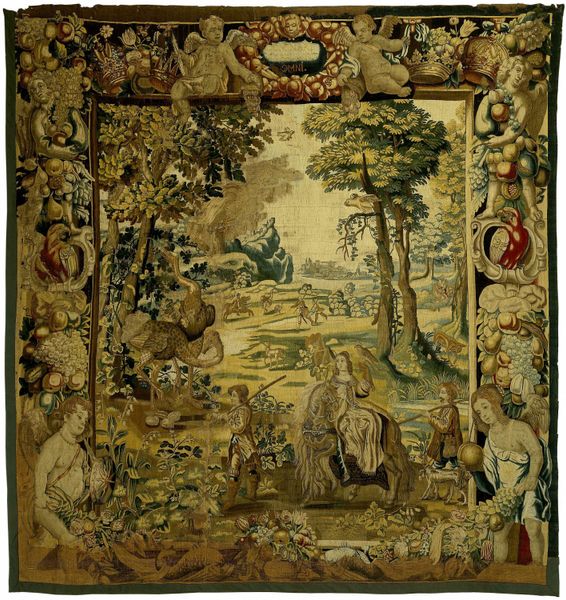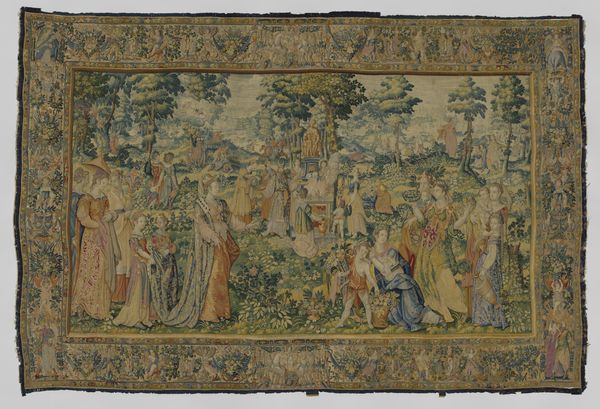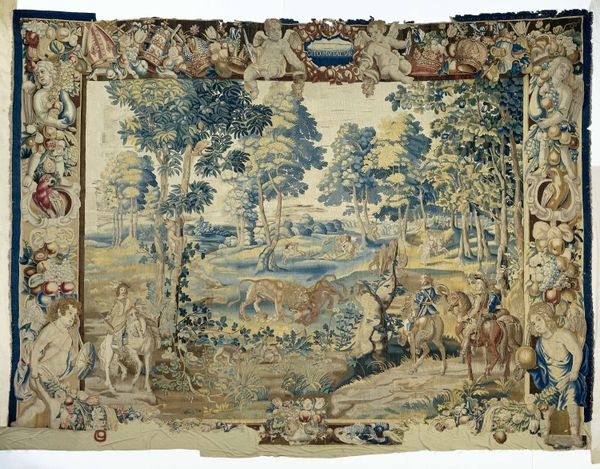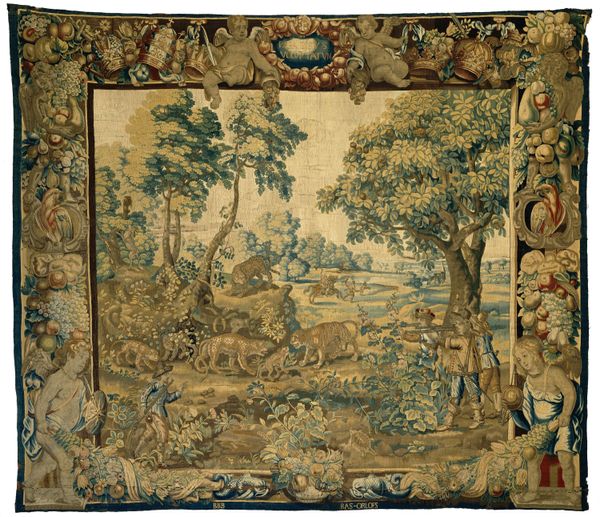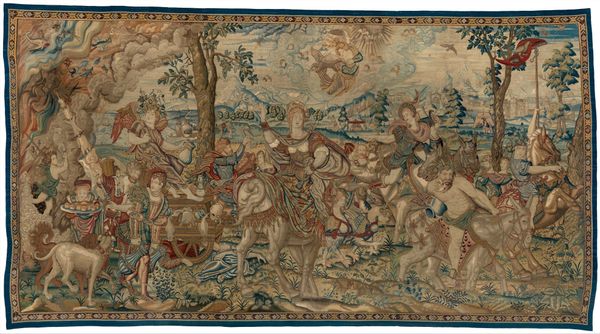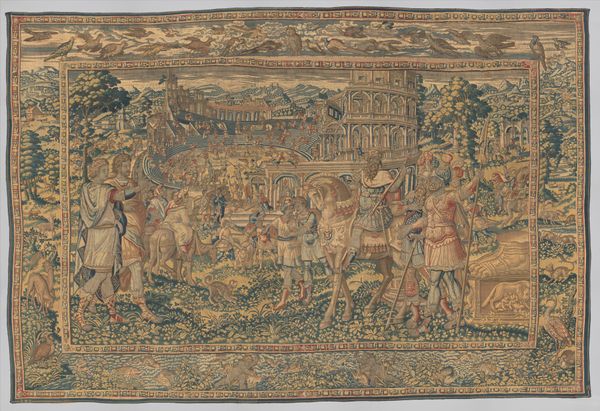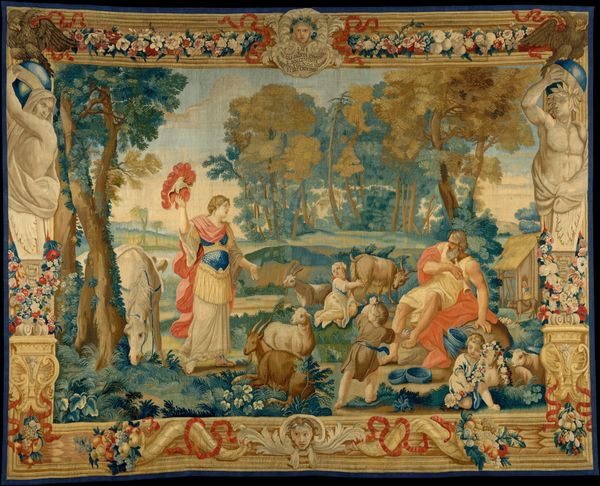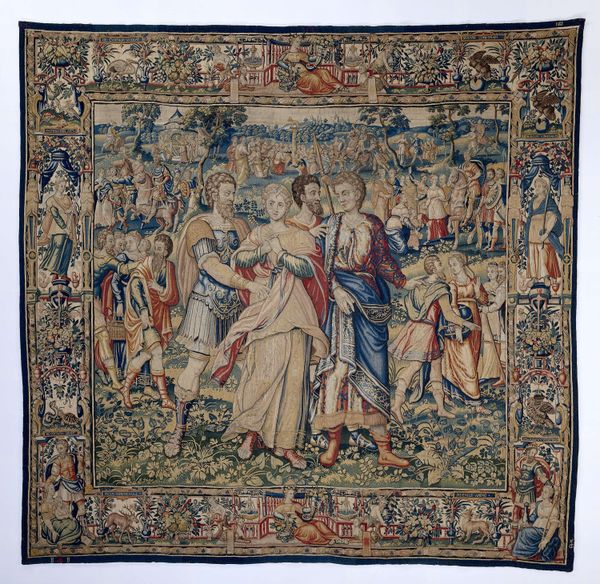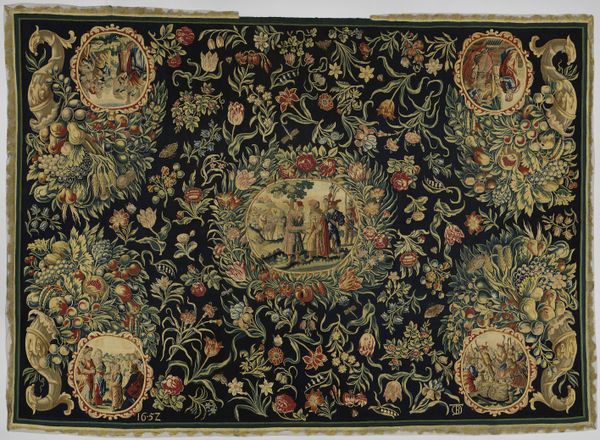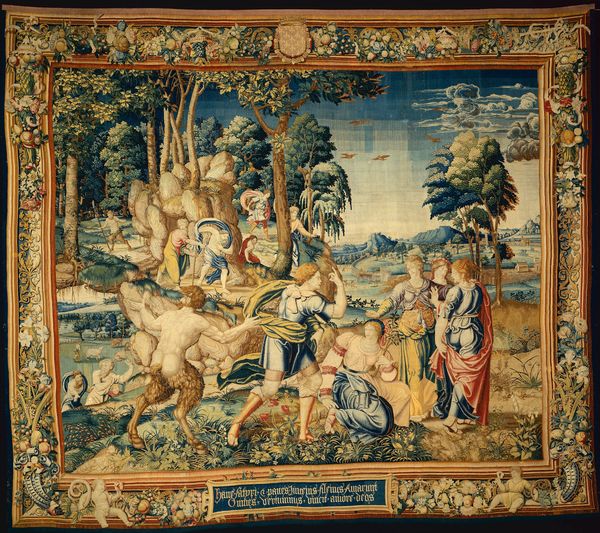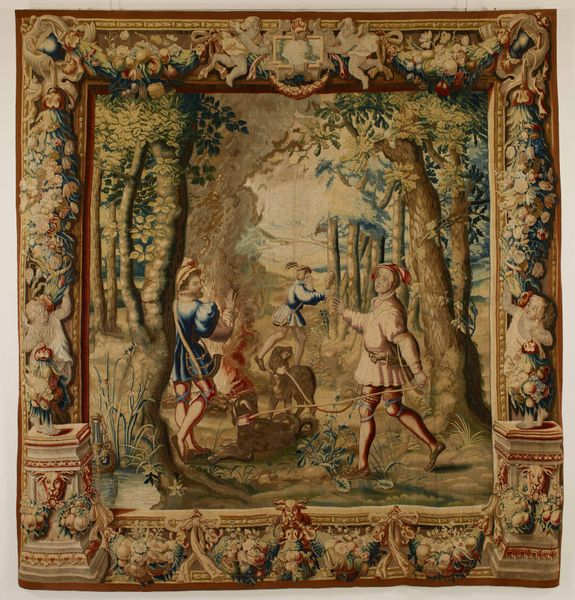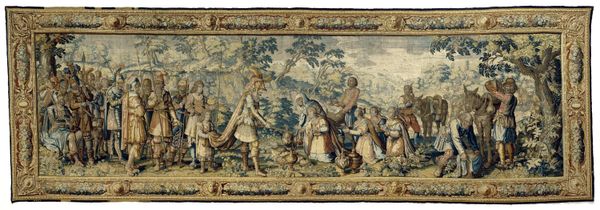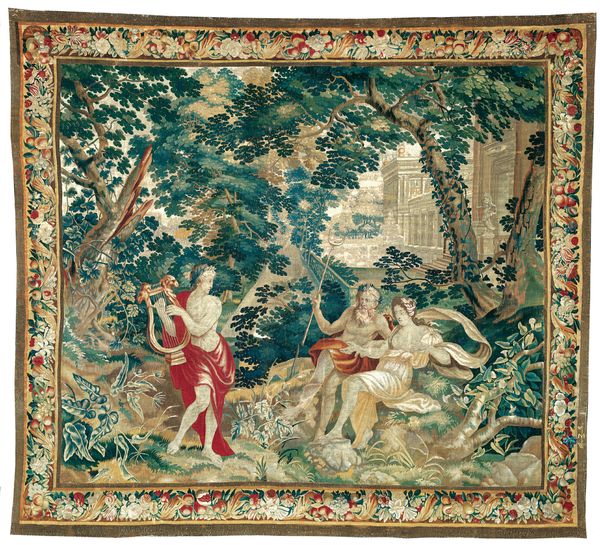
textile
#
narrative-art
#
landscape
#
textile
#
figuration
#
11_renaissance
#
oil painting
#
genre-painting
#
history-painting
Dimensions: height 170 cm, width 675 cm
Copyright: Rijks Museum: Open Domain
This tapestry illustrates a biblical scene and was woven in the mid-16th century, at a time when the Netherlands was undergoing significant religious and political upheaval. We see Abraham’s encounter with Melchizedek, King of Salem and priest of God, after Abraham’s victory in battle. The tapestry would have been displayed as a symbol of power. It represents the established societal order, with figures like Abraham, embodying leadership and religious authority. But let’s consider this piece within the context of the Reformation. During this period, visual culture became a battleground for expressing religious and political beliefs. Does it invite questions about power, faith, and the emerging tensions within society? The depiction of this meeting, rich with symbolism, might reflect the complex relationship between earthly power and divine authority. It offers a lens through which to examine the negotiation of identity and authority during the Reformation.
Comments
No comments
Be the first to comment and join the conversation on the ultimate creative platform.

